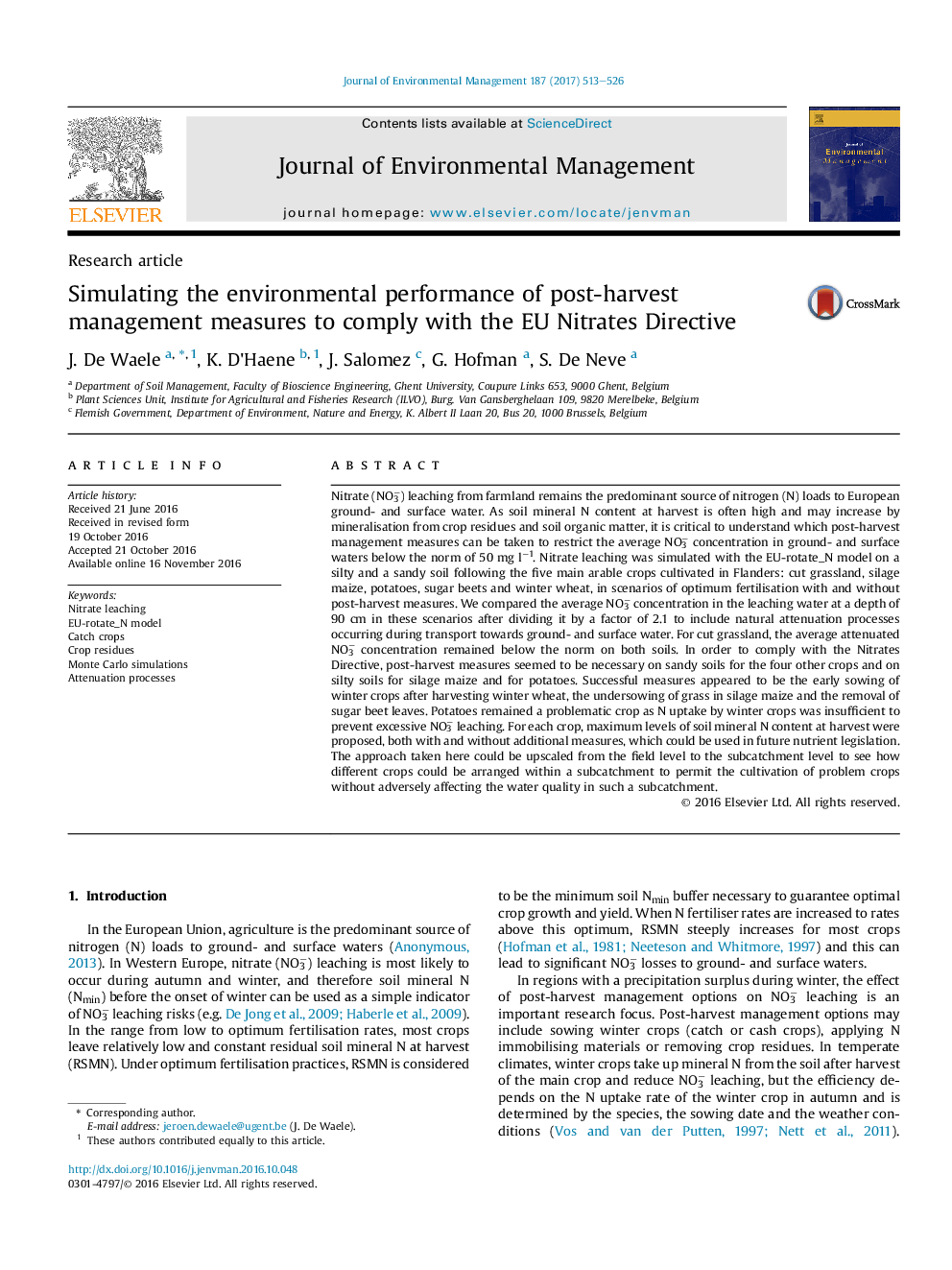| کد مقاله | کد نشریه | سال انتشار | مقاله انگلیسی | نسخه تمام متن |
|---|---|---|---|---|
| 5117401 | 1485228 | 2017 | 14 صفحه PDF | دانلود رایگان |
- NO3â leaching under cut grassland is always inferior to the 50Â ppm limit.
- NO3â leaching following 4 main arable crops exceeds the 50Â ppm limit on sandy soils.
- Post-harvest measures (PHM) reduce NO3â leaching to < 50 ppm for most crops.
- Existing PHM cannot reduce NO3â leaching consistently to <50Â ppm for potatoes.
- RSMN80% could be used as a policy tool to monitor risk of NO3â leaching.
Nitrate (NO3â) leaching from farmland remains the predominant source of nitrogen (N) loads to European ground- and surface water. As soil mineral N content at harvest is often high and may increase by mineralisation from crop residues and soil organic matter, it is critical to understand which post-harvest management measures can be taken to restrict the average NO3â concentration in ground- and surface waters below the norm of 50 mg lâ1. Nitrate leaching was simulated with the EU-rotate_N model on a silty and a sandy soil following the five main arable crops cultivated in Flanders: cut grassland, silage maize, potatoes, sugar beets and winter wheat, in scenarios of optimum fertilisation with and without post-harvest measures. We compared the average NO3â concentration in the leaching water at a depth of 90 cm in these scenarios after dividing it by a factor of 2.1 to include natural attenuation processes occurring during transport towards ground- and surface water. For cut grassland, the average attenuated NO3â concentration remained below the norm on both soils. In order to comply with the Nitrates Directive, post-harvest measures seemed to be necessary on sandy soils for the four other crops and on silty soils for silage maize and for potatoes. Successful measures appeared to be the early sowing of winter crops after harvesting winter wheat, the undersowing of grass in silage maize and the removal of sugar beet leaves. Potatoes remained a problematic crop as N uptake by winter crops was insufficient to prevent excessive NO3â leaching. For each crop, maximum levels of soil mineral N content at harvest were proposed, both with and without additional measures, which could be used in future nutrient legislation. The approach taken here could be upscaled from the field level to the subcatchment level to see how different crops could be arranged within a subcatchment to permit the cultivation of problem crops without adversely affecting the water quality in such a subcatchment.
Journal: Journal of Environmental Management - Volume 187, 1 February 2017, Pages 513-526
